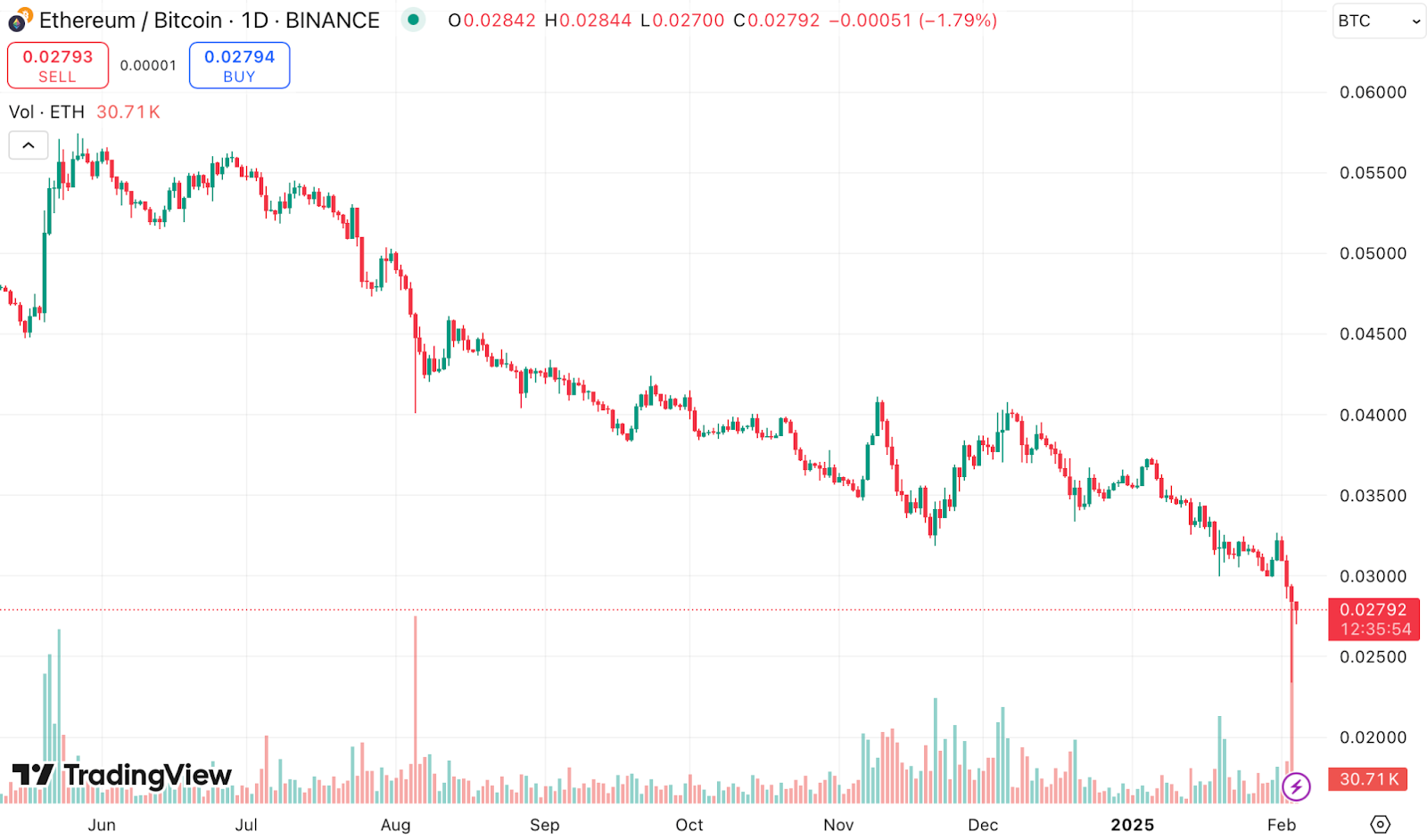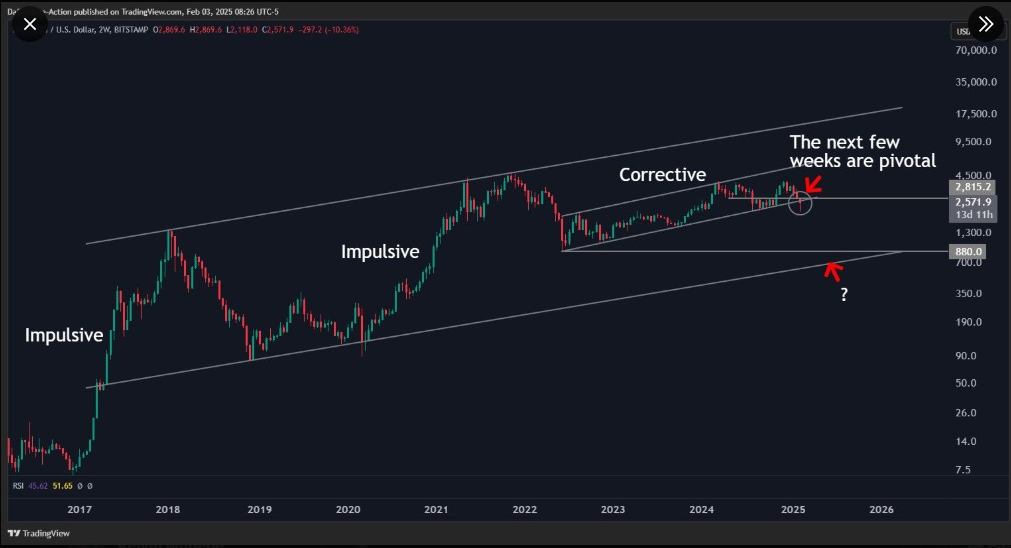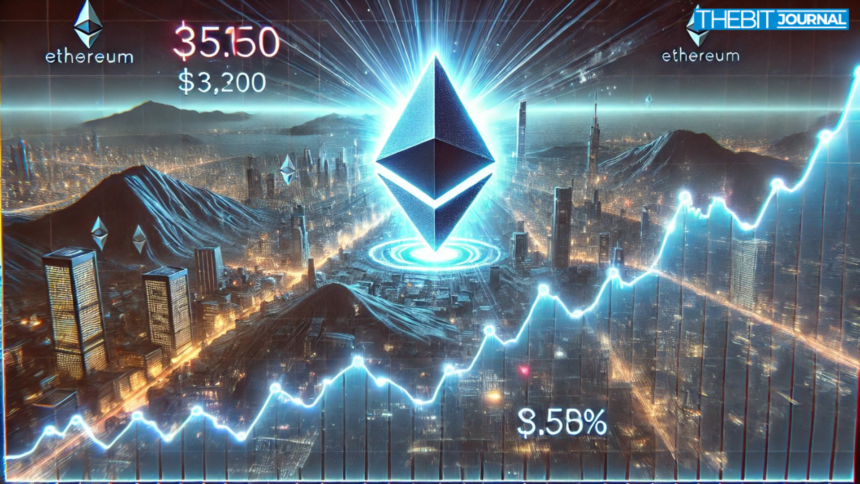According to Coin Market Cap, Ethereum took a steep hit from new U.S. tariffs but bounced back strongly. This has left many to wonder if it can keep up its momentum amid ongoing global and market uncertainties.
Crypto Titans and Institutional Giants Bet Big on ETH’s Comeback
On February 1, the U.S. imposed tariffs—25% on imports from Canada and Mexico and 10% on Chinese goods—that rattled global markets and sent Ethereum’s price down to $2,150. Soon after, Canadian Prime Minister Justin Trudeau announced that a 30-day pause on the tariffs had been secured amid ongoing border security talks, and Mexican President Claudia Sheinbaum confirmed a one-month suspension.
These diplomatic moves quickly restored confidence, and by February 4, Ethereum had bounced back impressively to $2,700, even briefly reaching nearly $2,900. Prominent voices in the crypto space expressed renewed optimism.
Eric Trump remarked on social media, “In my opinion, it’s a great time to add $ETH,” reinforcing the bullish sentiment. Institutional players also signaled their confidence in Ethereum’s potential.
World Liberty Financial, a DeFi project with ties to the Trump family, moved $307.41 million in eight different assets to Coinbase Prime for treasury management. Shortly after, the firm unstacked 19,423 units of ETH—converting them to ETH—and deployed $5 million in USDC to purchase an additional 1,826 ETH at $2,738. Meanwhile, Fidelity acquired $49.75 million worth of ETH, further underlining institutional support. Despite these moves, Ethereum remains about 15% lower than its value a week ago and nearly 45% below its all-time high of $4,890 reached in November 2021.
The dramatic drop to $2,150 served as a market reset—clearing out nearly $4 billion in low-quality leveraged positions that had built up over time.
As one analyst observed, “There was a lot of garbage low-quality leverage long open on Ethereum which got closed when price touched the 2100 area.” Another trader noted, “$ETH may have offered the sweetest gift of 2025, dipping below the 200 WMA in the early morning and testing the 0.618 Fib, as it did in August and Sept.”
Such resets, while painful in the short term, have paved the way for a recovery based on solid spot demand rather than speculative leverage.
Ecosystem Enhancements and Competitive Pressures
Amid the short-term recovery, Ethereum’s technical ecosystem is also undergoing critical updates. On February 3, validators approved an increase in the network’s gas limit—from 30 million to over 31 million units—with expectations that it may eventually reach up to 36 million. This change is designed to improve transaction throughput and reduce congestion on the network, thereby supporting the growing array of decentralized applications.
The upcoming Pectra upgrade, slated for early 2025, promises further scalability enhancements, particularly for layer-2 solutions. Platforms like Arbitrum, Optimism, and zkSync are already easing transaction fees and congestion by processing multiple transactions off-chain. Yet, these improvements are set against a backdrop of stiff competition from blockchains such as Solana and Avalanche, which inherently offer lower fees and higher speeds.

Beyond its technical upgrades, its market position is under strain. As of February 4, the ETH/BTC ratio fell to 0.027—its lowest since March 2021 and nearly 50% lower than a year ago. Although Ethereum’s rebound appears strong, the key question is whether it can maintain this momentum.
Ethereum’s 2025 Outlook Hangs in the Balance
Ethereum recently experienced a dramatic 35% bounce after a sharp drop that raised manipulation concerns, with market makers absorbing liquidity from panic sellers. However, this rebound now faces a crucial test at the $3,300 resistance level. Failure to break through or hold above this point could signal further downside and the formation of new long-term support levels.
Adding another layer of complexity, analyst Justin Bennett highlights that ETH must also reclaim and maintain the $2,800 support level to avoid a significant bearish breakdown. Since June 2022, its price action has been largely corrective, lacking the strong momentum seen in previous bull markets.

According to Bennett’s charts, dropping below this level might force the price beneath the lower boundary of its long-term ascending channel, potentially accelerating a downtrend. Conversely, a robust rebound from this key support could restore bullish momentum.
Meanwhile, recent volatility has drawn strategic whale accumulation, including a notable purchase by the 7 Siblings, fueling hopes for a turnaround. With both support and resistance levels in play, its next move will be critical for setting its near-term direction.
ETH’s 2025 price will depend on its ability to scale and maintain demand. DigitalCoinPrice predicts an average of around $5,510 (peaking at $6,037), while Changelly is slightly more optimistic, with averages near $6,124 and highs up to $7,194. Joe, co-founder of DeAgentAI, points out that current trends mirror historical patterns, so traders should watch key support levels closely.
Will ETH Scale Fast Enough to Reach $47K by 2030?
Looking ahead to 2027, if it continues to lead in smart contracts and improves its scalability, Digital Coin Price can reach an average of about $9,580 (peak $10,098). Meanwhile, Changelly forecasts averages of $12,316 and potential highs of $14,527. Growth in DeFi, NFTs, and asset tokenization might boost demand, though tougher market conditions could also pose challenges.
For 2030, forecasts vary widely. DigitalCoinPrice estimates an average of around $14,829 (with a high of $15,108), while Changelly offers a bolder outlook, predicting an average of $40,055 and peaks reaching $47,066. With stiff competition from blockchains like Solana and Avalanche, these long-term predictions carry inherent risks. Investors should consider both technical forecasts and real-world trends before making long-term commitments.
Conclusion:
Despite its positive recovery, Ethereum still faces challenges, ranging from ongoing geopolitical uncertainties to competitive pressures. As it evolves with network upgrades and changing economic conditions, its ability to handle challenges—both external and internal—will be key to its growth in 2025 and beyond.
Disclaimer: This article is for informational purposes only and does not constitute financial advice. All predictions are based on current market analysis and may change over time. Always perform research and consult with a financial professional before making any investment decisions.
Stay tuned to The BIT Journal and watch Crypto’s updates. Follow us on Twitter and LinkedIn, and join our Telegram channel to be instantly informed about breaking news!
Frequently Asked Questions (FAQs)
1. What triggered ETH’s drop to $2,150?
U.S. tariffs (25% on Canada/Mexico and 10% on China) drove the decline.
2. How did diplomatic moves stabilize ETH?
A 30-day tariff pause secured by Canada and Mexico quickly restored market confidence.
3. What was ETH’s percentage rebound?
It surged 35%, recovering from $2,150 to nearly $2,900.
4. What did the market reset accomplish?
It cleared nearly $4 billion in low-quality leverage, paving the way for recovery.
5. Which institutional moves boosted it?
Major investments by World Liberty Financial and Fidelity signaled renewed support.
Glossary of Key Terms:
Tariff: A tax imposed by a government on imported or exported goods.
Bitcoin: The first and most well-known cryptocurrency, often referred to as digital gold.
Ethereum: A digital platform that runs decentralized applications and smart contracts for transactions.
Support Level: A price threshold, noted here at $2,800 for ETH, where buying interest helps prevent further declines.
Market Reset: A sharp price decline that clears out weak, leveraged positions, setting the stage for a recovery based on stronger, spot-market demand.
References:
Coin Market Cap: https://coinmarketcap.com
Binance: https://www.binance.com
Justin Bennett X: https://x.com/JustinBennettFX/status/1886412529506664943
Trading View: https://www.tradingview.com/


























